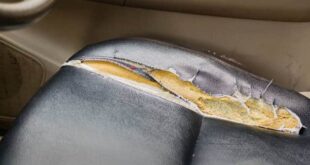Power Steering Repair: A Guide to Maintaining Your Vehicle’s Power Steering. Maintaining the power steering system in your vehicle is crucial for smooth and safe driving. A malfunctioning power steering can lead to hard steering, which can be both dangerous and inconvenient. This comprehensive guide will provide you with all the necessary information about power steering repair, including common issues, how to diagnose problems, repair options, and maintenance tips to ensure your power steering system stays in top condition.
Understanding Power Steering Systems
Types of Power Steering Systems
- Hydraulic Power Steering (HPS): Utilizes hydraulic pressure generated by a pump driven by the engine.
- Electric Power Steering (EPS): Uses an electric motor to assist in steering.
- Electro-Hydraulic Power Steering (EHPS): Combines elements of both hydraulic and electric systems.
Common Power Steering Problems
- Fluid Leaks: One of the most common issues. Leaks can occur from hoses, seals, or the pump.
- Noisy Steering: Often caused by low fluid levels, air in the system, or a failing pump.
- Stiff Steering Wheel: Can be due to a lack of power steering fluid, belt issues, or a failing power steering pump.
- Whining Noise: Usually indicates a problem with the power steering pump.
- Vibrations: Could be due to worn steering rack mounts or internal wear.
Diagnosing Power Steering Issues
- Check Fluid Levels: Low power steering fluid can cause various issues. Refill if necessary.
- Inspect for Leaks: Look for any signs of fluid under the vehicle or around the power steering system.
- Listen for Noises: Identify any unusual noises when turning the steering wheel.
- Check Belt Condition: Ensure the belt driving the power steering pump is in good condition.
- Test Steering Response: Notice any stiffness or difficulty in turning the wheel.
Power Steering Repair Options
- Fluid Leak Repair:
- Identifying Leaks: Use UV dye or look for visible leaks.
- Fixing Leaks: Replace hoses, seals, or the power steering pump as needed.
- Power Steering Pump Replacement:
- Symptoms of a Bad Pump: Whining noise, hard steering, or leaks.
- Replacement Process: Remove the old pump, install a new one, and refill the fluid.
- Steering Rack Replacement:
- Signs of a Bad Steering Rack: Excessive play, leaking fluid, or unusual noises.
- Replacement Procedure: Remove the old rack and install a new one.
- Belt Replacement:
- Symptoms of a Worn Belt: Squeaking noise, loss of power steering assistance.
- Replacement Steps: Remove the old belt and install a new one.
- Electronic Power Steering Repair:
- Diagnosing Issues: Use diagnostic tools to identify electronic faults.
- Repairing EPS: May involve replacing the motor or recalibrating the system.
Preventive Maintenance Tips
- Regular Fluid Checks: Ensure the power steering fluid is at the correct level.
- Inspect for Leaks: Regularly check for signs of fluid leaks.
- Belt Maintenance: Keep the power steering belt in good condition.
- Clean Reservoir: Occasionally clean the power steering fluid reservoir to prevent contamination.
- Use the Correct Fluid: Always use the manufacturer-recommended power steering fluid.
10 Tips for Power Steering Maintenance
- Check Fluid Levels Regularly: Ensures optimal performance and prevents damage.
- Inspect for Leaks: Early detection can prevent major repairs.
- Listen for Noises: Address unusual sounds promptly to avoid further issues.
- Replace Fluid as Needed: Old or contaminated fluid can cause system failure.
- Maintain Belts: A properly tensioned belt ensures the pump works efficiently.
- Avoid Overturning the Wheel: Reduces stress on the power steering components.
- Keep the System Clean: Prevents contamination and prolongs system life.
- Regular Inspections: Professional checks can identify potential problems early.
- Follow Manufacturer Guidelines: Adhere to service intervals and recommendations.
- Address Issues Promptly: Immediate repair of any problem can prevent costly damage.
10 FAQs about Power Steering Repair
- Q: How do I know if my power steering pump is bad? A: Common signs include whining noise, hard steering, and fluid leaks.
- Q: Can I drive with a power steering leak? A: It’s not advisable, as it can lead to system failure and difficult steering.
- Q: How often should I check power steering fluid? A: Check it monthly and top it off as needed.
- Q: What type of fluid should I use? A: Use the fluid recommended by your vehicle’s manufacturer.
- Q: How do I bleed the power steering system? A: After repair, refill the fluid and turn the steering wheel back and forth to remove air.
- Q: What causes power steering fluid to foam? A: Air in the system, usually from a leak or improper bleeding.
- Q: Can I use any power steering fluid in my car? A: No, always use the specified type for your vehicle.
- Q: Why is my steering wheel hard to turn? A: Possible causes include low fluid, a failing pump, or belt issues.
- Q: How long does a power steering pump last? A: Typically, it can last between 50,000 to 100,000 miles, depending on usage and maintenance.
- Q: Is it expensive to repair power steering? A: Costs vary depending on the issue, but early detection and repair can minimize expenses.
Conclusion
Proper maintenance and timely repairs of your power steering system are essential for ensuring a safe and smooth driving experience. Regular checks for fluid levels, belt condition, and potential leaks can prevent most power steering issues. Addressing problems promptly when they arise can save you from costly repairs and ensure your vehicle remains reliable on the road. By following the tips and guidelines provided in this article, you can maintain your power steering system in optimal condition, ensuring your vehicle’s longevity and performance.
 oto car insurance used car repair
oto car insurance used car repair
